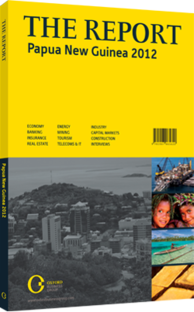On the rise: Very active palm oil production earns a spot among top exporters
While the local palm oil industry’s increasing maturity over the past decade has been impressive, its linear pattern lags behind the exponential growth seen in other palm oil-producing countries such as Malaysia or Indonesia. This slower but steady pattern is due to the hobbling influence of the complicated land usage and ownership system in PNG. Another factor is the relatively high cost of production resulting from increased costs of labour, transport and energy, inefficient infrastructure, inflation and security issues.
“The cost of doing business is expensive here, and as a result one tonne of crude palm oil is 30% more expensive than in Indonesia. Some 95% of PNG's palm oil is exported to the EU and the existing trade preferences established under the EU/ACP iEPA is extremely important,” Orrell told OBG.
MARKETING SUSTAINABILITY: One way PNG palm oil producers compete is by marketing quality over quantity, specifically by attaining the challenging international standard of the Roundtable on Sustainable Palm Oil (RSPO) certification. The certification is notoriously difficult to fulfil, particularly for major exporters such as Indonesia and Malaysia due to their substantial peat land environments. The RSPO certification encourages the curtailment of greenhouse gas emissions, meaning that there is pressure to avoid palm oil plantings on areas of deep peat, as they emit such gasses. PNG’s palm oil industry has publicly committed to avoid planting on peat land, especially since RSPO accreditation would allow PNG’s holders access to lucrative selective markets in the EU and North America.
Palm oil refining mills also began adopting ISO 14,001 environmental standards as early as 2005, and now, all mills are certified. “We are very careful to open new areas to oil palm plantations because of pressure to remain environmentally friendly; for this reason we are limited in seeking new areas,” Felix Bakani, the acting secretary-general of the Oil Palm Industry Corporation, told OBG. “We could have had more output and revenue, but we must also respect the environment.” After a relatively late entry into the palm oil sector spearheaded by producers in Asia, PNG palm oil production is coming into its own as it distances itself from other domestic agricultural products in terms of both output and revenue. Exports reached an all-time high in 2010 of 453,300 tonnes, worth PGK943.3m ($448.9m) according to PNG’s central bank.
Production looks set to continue its upward trend, with exports reaching 279,200 tonnes in the first half of 2011, up 16.9% from the 238,800 tonnes over the same period the previous year. Total production of palm oil fresh fruit bunches (FFBs) reached 2.51m tonnes in 2010, according to the PNG Palm Oil Council (POC).
TAPPING INTO PRODUCTION: There are currently two major palm oil producers: New Britain Palm Oil (NBPOL) and Hargy Oil Palm. Production is centred around six palm oil project areas. Hoskins in West New Britain province is the largest area, yielding 1.29m tonnes of FFBs in 2010, according to the POC. The nearby Bialla project adds another 398,540 tonnes of FFBs. Located in the Oro province, the Popondetta area is the third largest in acreage and production with 371,702 FFB tonnes. The Milne Bay Oil Palms Estate harvested 248,424 tonnes, followed by Ramu with 82,155 tonnes and New Ireland with 122,123 tonnes.
Newer projects are also being developed such as the Suwain Damasara Sustainable Agro-forestry in Aitape, Vailala Purari Oil Palm Development in the Gulf province and Collingwood Bay in the Oro province. Currently the sector is experiencing the most rapid growth in miniestates ranging from a few hundred ha to a few thousand. This is due in part to larger plantation operators, many of which are foreign based, waiting for issues related to politics and landownership to be resolved.
MOBILISING SUCCESS: One reason for the palm oil sector’s success is its efficiency in mobilising labour from all over, said the PNG Palm Oil Council’s executive director, Ian Orrell. Of equal importance is that many established plantations have managed to secure alienated land (about 3% of PNG territory) for plantations.
You have reached the limit of premium articles you can view for free.
Choose from the options below to purchase print or digital editions of our Reports. You can also purchase a website subscription giving you unlimited access to all of our Reports online for 12 months.
If you have already purchased this Report or have a website subscription, please login to continue.

